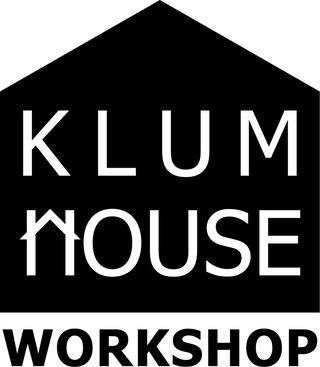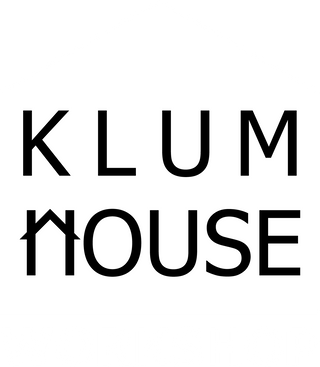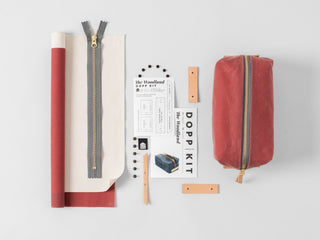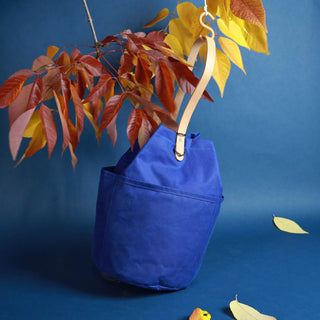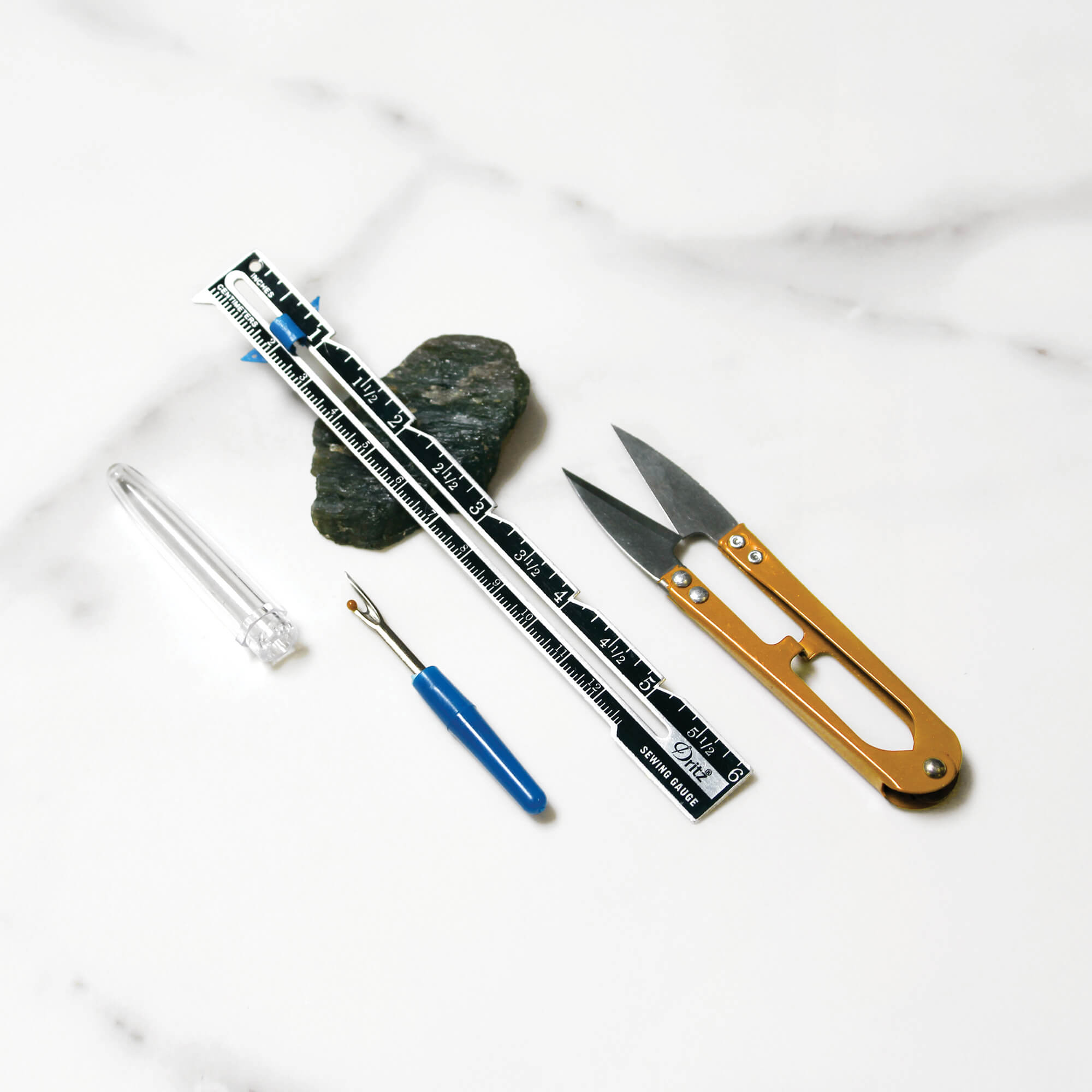
At Klum House, we’re strong believers that you don't need a fancy sewing machine or industrial equipment to make amazing, professional-quality bags, but you will need some essential tools and supplies to be successful. Here's a list of our favorites.
SEWING MACHINE
At Klum House, all of our bags are designed for success on a home sewing machine. We test our patterns on a variety of home machines and find that the majority of them, if they have been well maintained and have a sharp needle, are up for the task. If you’re a beginner looking to invest in your first machine, these two heavy-duty home machines get the Klum House seal of approval.
Singer Heavy Duty 4423
Our favorite machine for beginners is the Singer Heavy Duty. We’ve used these machines for years in all of our bag making workshops! It is affordable and has a strong motor that can handle thicker fabrics. Whether you're planning on sewing waxed canvas bags or getting started on your first handmade wardrobe, this machine can handle it all.
$170–$220
_________________________________________________________________________________________________________________
Using the correct thread for your project is important. Inexpensive threads tend to be weak and fuzzy, and eventually will lint up and clog your tension disks. Our favorite thread for bag making is all-purpose polyester thread. It’s super strong and comes in a variety of colors to match our waxed canvas!
_________________________________________________________________________________________________________________
NEEDLES
Topstitching Needles
Choosing the right needle for you project is based on the type and weight of fabric you’re working with (i.e. knit vs. woven) and the thickness of your thread. For almost all of our waxed canvas bag projects, we use a sharp, size 100 denim needle. They’re great for stitching through multiple layers of heavy-duty fabric without breaking. The Slabtown Backpack, however, calls for a topstitching needle, which has a bigger eye and a more rounded sharp point, making it easier for thick topstitching thread to pierce through the fabric.
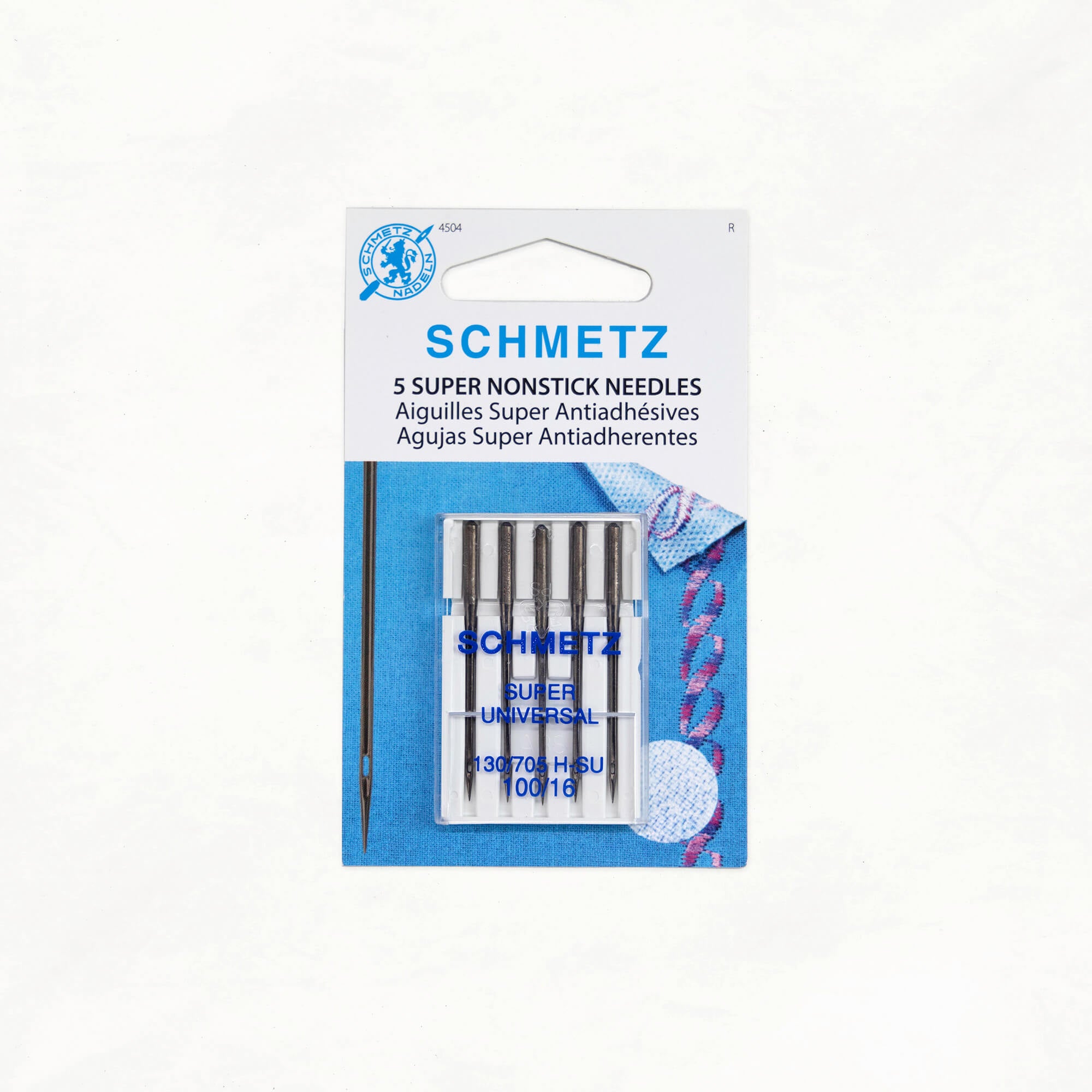
FABRIC MARKING TOOLS
Whether you’re drafting pattern pieces onto fabric or stenciling small rivet placement marks through a template, using a high-quality fabric marking tool is key. We recommend having both a Chaco Liner Pen and fabric pencils on hand to use in different scenarios. These chalk-based marking tools create impermanent marks that can be rubbed away. Choose a contrasting color for the best visibility.
_________________________________________________________________________________________________________________
CRAFT CLIPS + PINS
When working with multiple layers of heavy-duty fabric, we generally prefer using craft clips rather than pins. Craft clips are fuss-free and have a strong hold, so they won’t move around on you. Pins have their place too though, and are great for lighter weight fabrics or for flagging a precise point. Every bag maker’s studio should have both!
Craft clips are great for holding multiple layers of thick fabric in place when straight pins just won't cut it. Plus, they come in a bunch of cute colors!
_________________________________________________________________________________________________________________
SEAM RIPPER, SEAM GAUGE AND THREAD SNIPS
An inevitable part of becoming a bag making is making mistakes! We all make them. It’s one of the very best ways to learn. Having a sharp, high-quality seam ripper nearby is essential for removing incorrect stitches quickly so you can start again. A seam gauge is a simple little device that comes in hand for accurately measuring short spaces, like hems and seam allowances. It’s a small ruler with a little slide. In the Klum House studio, our super-sharp thread snips are always within an arms reach, ready to cut work from the sewing machine or clean up stray threads.
_________________________________________________________________________________________________________________
We love this 5” x 20” non-slip quilting ruler for cutting and marking straight lines. The lines are easy to read and the transparency comes in very handy. We use this quilting ruler with a Chaco pen for drafting or with a rotary cutter on a self-healing cutting mat for cutting fabric and leather. (We also carry a 5” x 5” square ruler, which is especially useful for marking boxed corners!)
_________________________________________________________________________________________________________________
Rotary cutters are designed to make straight cuts through leather or multiple layers of heavy-duty fabric with speed and accuracy. They can be used freehand or in combination with a quilting ruler but always with a protective cutting mat underneath. Look for a rotary cutter with a comfortable grip, sharp blade, and maybe even a safety lock for good measure! We love this rotary cutter from Kai.
_________________________________________________________________________________________________________________
CUTTING MAT
If you use a rotary blade to cut fabric, you'll need a self-healing cutting mat. They provide a reliable workspace that's large enough to cut large widths of material, the gridded surface is excellent for quick measurement checks, plus they protect your work surface! We really like this double-sided 24” x 26” self-healing cutting mat from Olfa.
_________________________________________________________________________________________________________________
At Klum House, we are devout believers in the edgestitch presser foot! This inexpensive foot is sometimes called a 'Stitch in the Ditch' presser foot and helps create a perfectly parallel straight stitch in relation to the edge of your fabric or seam. We've found that it's especially helpful when sewing through multiple layers of fabric and topstitching.
_________________________________________________________________________________________________________________
WALKING FOOT + JEAN-A-MA-JIG
For projects with many layers of heavy-duty fabric or extra bulky seams, like our Slabtown Backpack, these two tools can give your sewing machine that extra boost it needs to power through. A walking foot attachment, also called a “quilting foot,” is a sewing machine accessory with built-in feed dogs to help guide layers of heavy-duty fabric evenly through the machine. A jean-a-ma-jig, also called a “hump jumper,” is a tool used to lift up the presser foot of your sewing machine to help it sew through thick seams. We recommend having both of these at the ready for heavy-duty sewing projects!
_________________________________________________________________________________________________________________
Have Fun Making!
